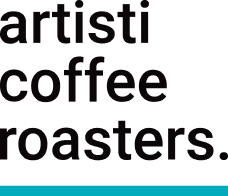When setting up a cafe, it's not just about choosing the right beans or perfecting your latte art. One crucial factor that can make or break your cafe's success is the workflow. From the customer flow to the production process and everything in between, a well-thought-out layout can streamline operations, improve efficiency, and create a pleasant experience for both customers and staff. In this blog post, we'll take you on a tour of the Artisti Espresso Bar, exploring the considerations they made in designing their cafe to optimize workflow and ensure a smooth operation.
Jump Straight Into OUR VIDEO.
Customer Flow
The first aspect to consider is how your customers will enter, order, and receive their products. At Artisti Espresso Bar, they have a main entrance and a separate sliding door for the exit. The layout allows customers to enter, place their orders at the point of sale, pick up their drinks and food, and then exit through the front door. This design not only improves customer flow but also facilitated their operations during challenging times when they had to close their dining area.
The Coffee Bar Layout
A key component of the cafe is the coffee bar, where the magic happens. The space behind the bar is critical for baristas to efficiently produce and serve coffee. Artisti Espresso Bar has thoughtfully arranged the equipment to create an efficient workflow. They have placed their point of sale system at the beginning, followed by the grinder, coffee machine, and jug washer. The strategic arrangement allows baristas to work smoothly, reducing the need to move back and forth.
Bench Depth and Utility
One significant consideration is the depth of the bench under the coffee bar. While a 900mm deep bench is ideal, it's essential to measure the space required for plumbing, coffee machine clearance, and any additional storage needs. For instance, Artisti Espresso Bar has utilized the space under the stairs for their wash-up area, optimizing their available space efficiently.
Power and Drainage Considerations
Power and drainage are critical aspects of your cafe's setup, especially for coffee machines, milk systems, and sinks. Artisti Espresso Bar has a dedicated 30-amp power supply to accommodate their coffee machines. Additionally, they have thoughtfully arranged their plumbing, ensuring easy access for both wastewater and milk system drainage. Implementing a pump-out box for waste management is a smart solution that prevents issues like blockages and bacterial growth.
Maximizing Efficiency and Ergonomics
To maintain an efficient workflow, consider the positioning of your equipment. For example, Artisti Espresso Bar has positioned their milkshake maker, batch brewer, and alternative brewing gear on the back bar, adjacent to their main production area. The arrangement allows baristas to easily access different tools while working, reducing unnecessary movements and strain.
Storage and Organization
Effective storage and organization are vital for a smooth workflow. Ensure that essential items, such as milk jugs, sugars, and takeaway trays, are easily accessible to baristas. Proper organization not only enhances productivity but also contributes to a clutter-free and visually appealing coffee bar.
Conclusion
Designing your cafe with a focus on workflow is key to success. From customer flow to barista efficiency, each aspect plays a crucial role in delivering a delightful cafe experience. Consider factors such as power supply, drainage, bench depth, and equipment placement to optimize your cafe's workflow. With careful planning and attention to detail, you can create a cafe that not only impresses customers with outstanding coffee but also ensures a seamless and efficient operation for your staff. So, embark on your journey to design the perfect coffee haven that delivers both exceptional experiences and top-notch efficiency!














